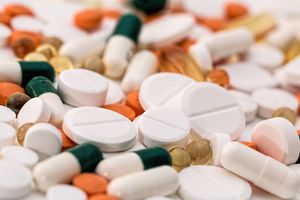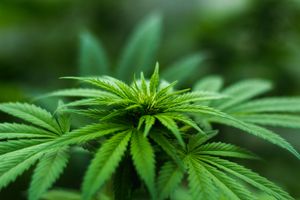Synthetic drugs, also referred to as designer or club drugs, are chemically-created in a lab to mimic another drug such as marijuana, cocaine or morphine.
The resulting designer drugs typically have a new different effect on the brain or behavior. Because these drugs are created in illegal labs, their ingredients and strength are almost impossible to know.
There are more than 200 identified synthetic drug compounds and more than 90 different synthetic drug marijuana compounds. Many of these synthetic drugs are made in foreign countries and then smuggled into the United States. These drugs have no manufacturing safety standards that are normally required by the Food and Drug Administration (FDA).
The effects of synthetic drug use can include: anxiety, aggressive behavior, paranoia, seizures, loss of consciousness, nausea, vomiting and even coma or death.
A risky experiment
 To understand what synthetic drug, and how they came to exist, you have to know what a “designer drug” is. A designer drug is a synthetic version of an illegal drug that was slightly altered to avoid having it classified as illegal. It is essentially an experiment by a chemist done to create a new drug that can be sold legally (on the Internet or in stores), allowing dealers to make money without breaking the law. As law enforcement catches up with new chemicals that are so created and makes them illegal, manufacturers devise altered versions to steer clear of the law. So the cycle repeats.
To understand what synthetic drug, and how they came to exist, you have to know what a “designer drug” is. A designer drug is a synthetic version of an illegal drug that was slightly altered to avoid having it classified as illegal. It is essentially an experiment by a chemist done to create a new drug that can be sold legally (on the Internet or in stores), allowing dealers to make money without breaking the law. As law enforcement catches up with new chemicals that are so created and makes them illegal, manufacturers devise altered versions to steer clear of the law. So the cycle repeats.
Some of these drugs are sold over the Internet or in certain stores (as “herbal smoking blends”), while others are disguised as products labeled “not for human consumption” (such as “herbal incense,” “plant food,” “bath salts” or “jewelry cleaner”) to mask their intended purpose and avoid health and safety rules.
Due to the constantly growing number of chemicals that are developed, designer drug users have no way of knowing what the drugs they take might contain. Further, as a small modification made to a known drug may result—and often does—in a new drug with greatly different effects, users cannot predict the impact on health from the substances they experiment with.
In the United States, some 200 to 300 new designer drugs were identified between 2009 and 2014, most of them manufactured in China. More than 650 new designer drugs have flooded into Europe in the past ten years. Some contain chemicals that have still not been completely identified, and whose effects on the human body and mind are unknown.
Types of synthetic drug
Fentanyl
Fentanyl is a synthetic opioid that is 80-100 times stronger than morphine. Pharmaceutical fentanyl was developed for pain management treatment of cancer patients, applied in a patch on the skin. Because of its powerful opioid properties, fentanyl is also misused. Fentanyl is added heroing to increase its potency, or be disguised as highly potent heroin. Many users believe that they are purchasing heroin and actually don’t know that they are purchasing fentanyl.
Synthetic marijuana
 K2 and Spice are synthetic marijuana compounds, also known as cannabinoids. But there are more. In fact, there are approximately 90 different synthetic marijuana chemical compounds. Spice has recently made headlines due to hundreds of people having negative reactions to the product across the country.
K2 and Spice are synthetic marijuana compounds, also known as cannabinoids. But there are more. In fact, there are approximately 90 different synthetic marijuana chemical compounds. Spice has recently made headlines due to hundreds of people having negative reactions to the product across the country.
Synthetic LSD
Synthetic LSD, better known as “N-Bomb” or “Smiles,” is a phenethylamine. This type of synthetic drug mimics the effects of LSD causing hallucinations and paranoia.
Synthetic stimulants
Synthetic drug stimulants, also known as cathinones, mimic the effects of ecstasy or MDMA. Bath salts and Molly are examples of synthetic cathinones.
Synthetic PCP
 MXE, or Methoxamine, is a synthetic compound that mimics the effects of PCP (phencyclidine) causing delusions, psychoses and a detached effect.
MXE, or Methoxamine, is a synthetic compound that mimics the effects of PCP (phencyclidine) causing delusions, psychoses and a detached effect.
Symptoms
If you are trying to determine if a person has abused a synthetic, you might be looking for signs and symptoms like these:
- Seizures
- Hallucinations
- Suicidal tendencies and attempts
- Homicidal tendencies
- Delusions
- Overstimulation
- Aggression
- Paranoia
- Chest pain
- Heart attack
- Death
- Overheating that causes a person to tear off his clothes
- Other self-destructive behavior like bashing one’s body or head against walls
Less severe symptoms of synthetic drugs can include:
- Agitation
- Anxiety
- Heart palpitations
- Sweating
- Inability to speak
- Restlessness
- Euphoria
Symptoms can last for hours or even days. Since these drugs are addictive, one of the signs of synthetics abuse is compulsive use despite the harm that is being experienced.
Treatment
 Substance-related disorders are chronic, complex diseases that require prolonged, intensive treatment. The type of substance involved and the severity of the addiction will dictate the course of treatment
Substance-related disorders are chronic, complex diseases that require prolonged, intensive treatment. The type of substance involved and the severity of the addiction will dictate the course of treatment
Treatment often begins with detoxification, using medicine to reduce withdrawal symptoms while a substance leaves the system.Different types of behavioral therapy and counseling can also support treatment, helping to deprogram certain behaviors and circumstances related to drug use.
An individual will sometimes embark on a 6-to-12-month rehabilitation program in a dedicated facility. Following this, they may live in supervised housing while they readjust to managing finances and finding employment.Certain medications can also serve to manage prolonged withdrawal symptoms and support sobriety in some people.
Continuum Recovery Center is a privately owned facility that offers state-of-the-art, evidence-based substance abuse treatment programs. They offer an array of services which include a Primary, Extended, Outpatient and Aftercare programs to the addicted and co-occurring populations.
Continuum Recovery is dedicated to transforming lives. Thier elite and passionate staff strive to enable our clients to live free from the bondage of addiction, while enhancing their quality of life. Through comprehensive, empowered, quality care, their seasoned clinicians provide a unique approach to substance abuse treatment by addressing its core elements of Mind, Body, and Spirit. With a clinically sound, spiritual approach, their programs are designed to alleviate this debilitating three-fold disease through individual, group, and family therapy. Continuum Recovery Center ffers each individual, and their families, the maximum opportunity to recover and live impactful, sustainable, substance-free lives.